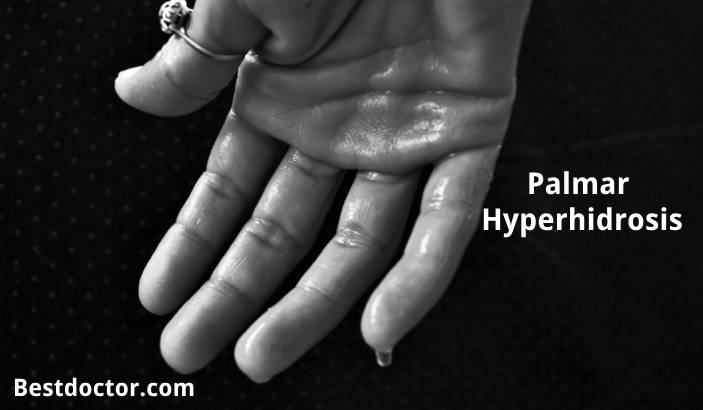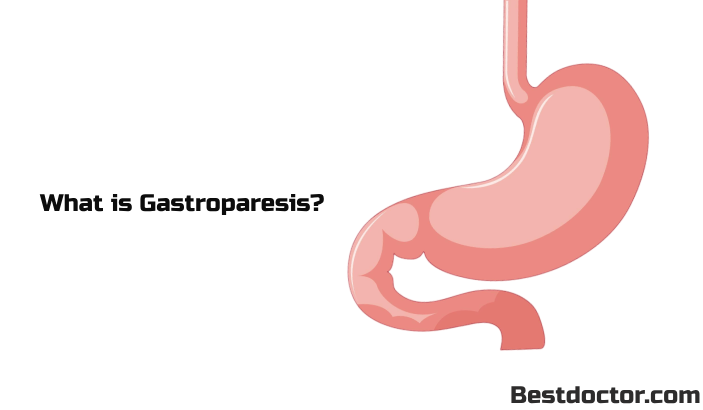Headache is one of the commonest presenting complaints at out-patient department settings. Headache is a complaint which each one of us has experienced at least once till date.
Headache is often associated with stress, anxiety and a list of several disease conditions. People often self-medicate or use home remedies to relieve a headache until. They seek medical help only when the frequency, duration and severity of headache increase. Nearly 25% of cases which report to the neurology clinic are of headaches.
So when to see a neurologist for a headache? It would be worthwhile to go through all the types of a headache so you get an idea as to which headaches are transitory and which ones are serious enough to seek a neurologist’s opinion.
Types of Headache
Headaches Can Be Differentiated Into Two Major Groups
Primary Headaches
- These headaches do not have any underlying pathology.
- Migraine, tension-type headache, cluster headache and other primary headaches are covered in this heading.
- Nearly 90% of cases of a headache are of primary origin.
| Sr. No. | Type of Headache | Description |
|---|---|---|
| 1. | Migraine | This is one-sided headache of moderate to a severe intensity associated with nausea, vomiting and photophobia during headache.
Migraine headache can vary in a presentation to different people. It can also vary in the same person at different times. |
| 2. | Cluster Headache | These are headaches of brief duration but severe in intensity. Patients describe this headache as “drilling-type”. A headache appears around or above the eyes and temples in a cyclic pattern lasting from a few minutes up to 2-3 hours.Pain is associated with watering and redness of eyes, nasal congestion and coryza. Drooping of the face on one side and reduced size of the pupil on the corresponding side are serious symptoms. A cluster headache tends to occur at the same time every day. |
| 3. | Tension Headache | It is a dull-type of headache affecting both sides of the head. A stressful or hectic day can trigger a tension headache. Other reasons are flu, caffeine and alcohol, sinusitis, eye strain, fatigue and emotional stress.
It is described as a tight band around the head but not debilitating. Muscular contractions in the head and neck are the reason for tension headaches. |
The Global Burden of Disease statistics reveals that a Tension headache and Migraine are 2nd and 3rd most prevalent disorders worldwide. A study conducted in India to estimate the burden of headaches and the statistics revealed that
- Prevalence of a migraine headache was higher among women than in men and that too more in the rural areas than urban.
- A migraine tends to peak in both males and females in the age group of 35-45 years.
- The crude prevalence of a migraine was about 25.6% and of a tension type headache was about 34%.
- Prevalence of a tension type headache was found to be similar in both genders.
Other Less Common Types of Primary Headaches
-
Primary Cough Headache
- It begins with a bout of cough or sneezing and lasts for a few minutes.
- Primary cough headache is due to a raised pressure in the head.
-
Primary Sex Headache
- It is a dull type of headache begins during sexual activity and becomes worse towards orgasm.
- Primary sex headache occurs due to reduced pressure in the head during coition.
-
Primary Exertion Headache
- It is a throbbing type of pain which can last for few minutes to hours.
- Possible theory behind this headache is dilatation of veins in the head due to exertion.
- This headache can be prevented by avoiding extreme exertion and strenuous activities.
-
Hypnic Headache
- This headache is severe and begins within a few hours after falling asleep and lasts for nearly 15-30 minutes.
- These headaches can occur several times while sleeping and is commonly seen among older women.
-
Hemicrania Continua
- It is a rare type of primary headache.
- Continuous one-sided headache of moderate intensity is present associated with redness of eyes and drooping of eyelids, excessive lachrymation, nasal congestion or a runny nose.
- Headache is debilitating. There are bouts of exacerbation of headache where the pain increases in intensity.
Secondary Headaches:
- These below mentioned headaches are termed as secondary because there is a definite underlying cause for these headaches.
- These headaches have an underlying pathology – infections, tumors, increased intra-cranial pressure and so on.
- About 10% headaches are of a secondary type.
Types of Secondary Headaches are:
1. Trauma – Trauma to the head whether minor or major, can trigger a continuous headache especially at the injured/ bruised site. In case of concussion, cerebral edema occurs which causes a throbbing type of pain until the edema subsides. Post-traumatic headaches usually resolve within 4 weeks after the trauma. Medications are prescribed to reduce pain as well as edema.
2. Medication Overuse Headache – This is one of the commonest causes of secondary headaches. The excess dose of over-the-counter medications like NSAIDs triggers a headache. Over use of barbiturates and opiates is equally common.
Treatment includes either weaning off or completely stopping the offending medications. Educating patients as well as families about hazards of medication over-use are usually helpful.
3. Space Occupying Lesions – Headache is common in about 30 of% patients having brain tumors. Pain due to tumors is generally worse from exertion or from coughing.
4. Subdural Hematoma – This isa common complication of head injury. Nearly 80% of patients with sub-dural hematoma present with a headache and altered sensorium. Since this is a mass lesion, headache features are similar to that of headache due to tumors.
5. Brain Abscess – Headache due to brain abscess is similar to that of tumors. Other common features are focal neurological deficit and seizures. Fever is present in about 50% of cases. In persons with AIDS, infection with toxoplasmosis is a common cause for brain abscess.
6. Idiopathic Intracranial Hypertension (IIH) – Diffuse swelling of the brain and raised intracranial pressure are causes for a headache. In a study carried put on 82 patients with IIH, about 30% had a tension-type headache and 20% had symptoms similar to a migraine with aura.
Other features are pulsating tinnitus, transient visual disturbances, and retro bulbar and radicular pain.
7. Orthostatic Headaches – These headaches precipitate usually because from a lumbar puncture procedure wherein CSF leakage occurs.
Head trauma, neurosurgery, excessive coughing, certain congenital syndromes or tumors can also cause CSF to leak.
Other factors not associated with CSF leakage are uremia, dehydration, carbonic anhydrase inhibitors and postural orthostatic tachycardia syndrome.
8. Cardiac Cephalgia – These headaches typically begin with exertion and subside on rest. Occasionally this headache is associated with some cardiac disease. At some occasions, headache occurs even at rest.
ECG during an episode of headache shows ischemic changes. Exertional headaches have an abrupt onset as compared to cardiac cephalgias and do not respond to analgesics.
9. Cerebrovascular Disease – Nearly 27% patients with stroke complain of headache. Headache at onset of stroke is associated with a history of migraine, female, cerebellar stroke and blood pressure lower than 120/70 mm of Hg.
Strokes involving posterior vessels are more commonly associated with headache. Nausea and vomiting are present in about 1-40% of cases.
10. Subarachnoid Hemorrhage (SAH) – It is characterized by onset of severe headache or “thunderclap headache”. In SAH 34% headaches occur during non-strenuous activity and about 12% develop during sleep.
There is no specific location of headache and is usually relieved from analgesics.
11. Cerebrovascular Diseases– Reversible cerebrovascular syndromes lead to narrowing of cerebral arteries at multiple locations. These syndromes present with onset of thunderclap headache and focal neurological deficits.
- Cerebral Sinus Thrombosis – About 75-90% of patients with cerebral sinus thrombosis present with the symptom of headache. Also, in about 15-20% cases, headache is the only presenting symptom. Headache due to cerebral sinus thrombosis is slow in onset and rarely thunderclap.
- Cervical artery dissection – this is yet another common but a fairly underrated cerebrovascular disease. Dissection meaning a tear in the innermost layer of an artery and formation of a hematoma there. Headache is a common symptom in about 60-95% patients with carotid artery dissection.
- In vertebral artery dissection, headache is a common presenting symptom in about 70% of cases. Pain in neck and headache at occiput (base of skull) is common. Headache is of throbbing type. Symptoms of stroke may be seen at the time of dissection or up to 2 weeks later.
Cerebral or vertebral artery dissection is often a complication of head and neck injury.
12. Infection – as per the International Classification of Diseases (ICD) headache due to infections can be divided into four groups:
- Headache due to intracranial infection – Meningitis, encephalitis, brain abscess and subdural empyema are included in this category. Headache due to meningitis and encephalitis is often associated with high grade fever, neck stiffness and altered or impaired consciousness.
- Headache due to systemic infection – Viral or bacterial systemic infections causing headache are listed under this category.
- Headache due to HIV/AIDS – Neurological complications are common since HIV has the ability to cross the blood-brain-barrier. Complications include cryptococcal meningitis, herpes, encephalopathy, CMV-encephalitis, cerebral toxoplasmosis and primary CNS lymphoma.
About 50%of patients with HIV infection experience headaches. - Chronic post-infectious headache – This condition can be diagnosed when the intracranial resolves but headache persists from 3months or more.
The International Classification of Diseases says that persistence of headache is considered a sign of continued bacterial meningitis.
The headaches may be immune-mediated or inflammatory in origin.
13. Sinusitis – Acute sinusitis can present with headache and tenderness on applying pressure over the affected sinus. Other signs and symptoms include fever, swelling over the affected sinuses, nasal obstruction or purulent nasal discharge.
An X-ray of paranasal sinuses is confirmatory.
14. Dental Illness – Dental caries or an infected tooth causes referred pain to head on affected side. Temporo-mandibular joint disorder tends to cause pain at both sides of the head.
15. Giant Cell Arteritis – This isa common cause for headaches above the age of 60 years. Nearly 50% patients with giant cell arteritis have polymyalgia rheumatic and about 15% patients’ with polymyalgia rheumatic develop giant cell arteritis.
Fever, headache with scalp tenderness, anemia, painful swallowing and jaw claudication, hoarseness of voice and muscular stiffness may be presenting symptoms. Symptoms however tend to change presentation over the time which makes diagnosis difficult.
Headache is seen in about 90% patients with giant cell arteritis.
16. Hypertension – About 20% patients with hypertension complain of headache. Occasionally headaches due to hypertension crisis have a thunderclap onset. Patients often describe headache due to hypertension as congested or a feeling of fullness. Dizziness is also associated with headache due to high blood pressure
When To see A Neurologist For Headaches?
Some headaches can be terribly debilitating and affect a person’s daily routine. Some headaches also have complications or they may be a presentation of some other major disease process. It is essential to report to a neurologist if you notice any of the following signs and symptoms along with a headache.
1. Increase in intensity of headache in spite of taking medications or trying out self-help methods.
2. Headache due to recent head trauma.
3. Fever more than 100 degrees Fahrenheit along with headache.
4. Headache with neck stiffness.
5. Headache suddenly increasing in intensity within 5 minutes of onset.
6. Inset of some neurological changes like drooping of face, slurred speech or muscular weakness at any part of the body.
7. Headache with dizziness and loss or change in level of consciousness.
8. Headache triggered by cough, sneezing, exercise or from change in posture.
9. Headache with severe pain around the eyes and vomiting.
10. Seizure during headache.
Any of the above signs and symptoms needs to be evaluated by a neurologist. The neurologist may suggest medications or a set of neurological examinations and investigations which will help to reach an accurate diagnosis and treat accordingly.
Dr. Himanshi is a Homoeopathic consultant and currently working as a lecturer in Post-graduate faculty of Homeopathy, Parul University, Vadodara. Completed BHMS and MD in Homeopathy in January 2018 and also has a clinical experience of about 6 years. Personal interests include reading, spending time with family and traveling.








Enhancing Your Career Opportunities with Improved Vision from LASIK Surgery in Manhattan
What Does Cloudy Urine Mean in Females and Males?
Palmar Hyperhidrosis: Understanding Causes, Symptoms, and Treatment
16 Warning Signs You Need to Go See Your Doctor As Early As Possible